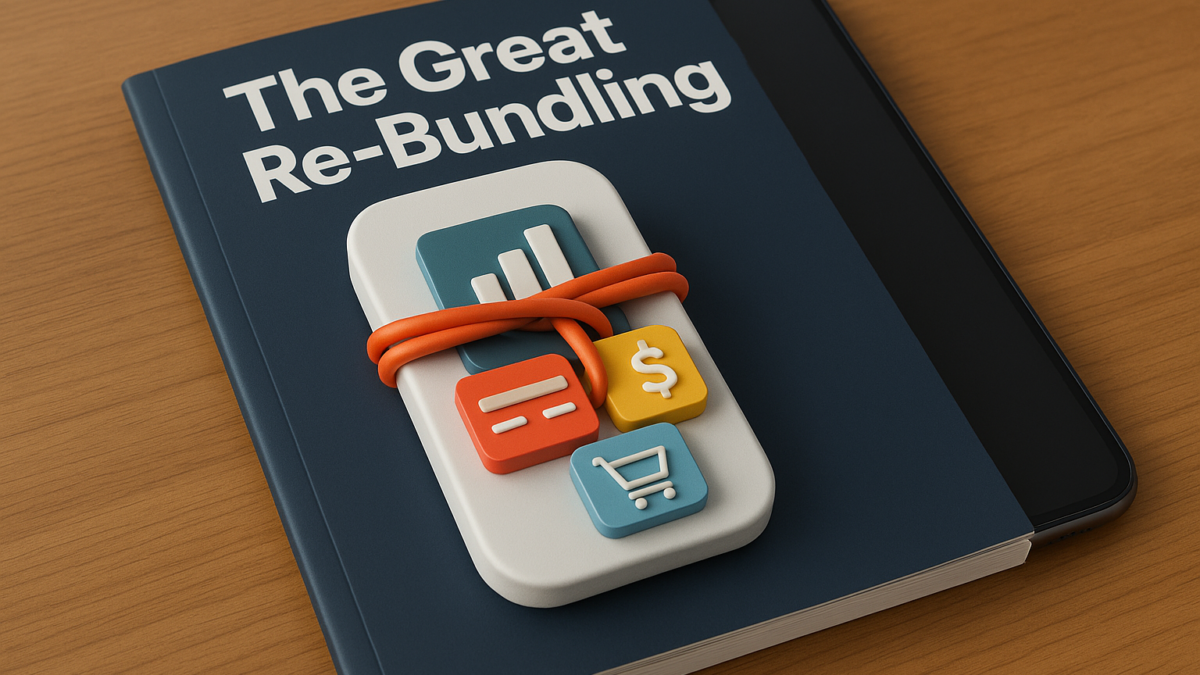The Great Re-Bundling: Why the Future of FinTech Is Embedded in Non-Financial Platforms
Table of Contents
Over the past decade, financial technology (FinTech) has been defined by the unbundling of financial services — apps for savings, apps for loans, apps for investing. But as the industry matures, a new trend is emerging: the great re-bundling, driven not by traditional banks or FinTech apps, but by non-financial platforms integrating embedded finance directly into their user experiences.
This shift signals a radical rethinking of where and how financial services are delivered and it’s poised to redefine the competitive landscape.
What Is Embedded Finance?
Embedded finance refers to the integration of financial services — such as payments, lending, insurance, or investing — directly into the products and services of non-financial companies.
Instead of users needing to visit a bank or open a separate app, financial tools are seamlessly built into the platforms they already use.
Examples of Embedded Finance in Action:
- Uber: Drivers can access real-time earnings and banking directly through the app.
- Shopify: Offers merchant loans and payment processing to its store owners.
- Apple Pay Later: Provides short-term financing within the Apple ecosystem.
- Amazon: Has integrated credit lines, insurance, and payments for sellers.
This isn’t just convenience — it’s a strategic evolution.
The Unbundling → Re-Bundling Journey
To understand the re-bundling, it helps to look back:
The Era of Unbundling
In the early 2010s, FinTech startups disrupted traditional banking by unbundling core services:
- Wealthfront for investing
- Venmo for peer-to-peer payments
- Robinhood for stock trading
- Chime for digital banking
Each solved a single pain point better than banks. But for consumers, managing 10+ separate apps became cumbersome.
The Re-Bundling Trend
Now, the trend is reversing. Users want convenience, not complexity. Instead of app overload, the next frontier is embedding financial functionality into existing user journeys — like checkout, booking, or vendor management — reducing friction and increasing adoption.
This is where embedded finance shines.
Why Embedded Finance Is the Future
1. Improved User Experience
Users don’t want to leave their primary app to access financing, insurance, or payments. Embedded finance ensures frictionless, contextual transactions that feel natural to the flow.
“People don’t want a loan; they want a sofa. Embedded finance makes that happen instantly.”
— Matt Harris, Bain Capital Ventures
2. Revenue Growth for Platforms
For non-financial platforms, embedding financial services opens new revenue streams through interchange fees, lending spreads, or subscriptions without building a bank from scratch.
3. Banking-as-a-Service (BaaS) Infrastructure
The rise of Banking-as-a-Service providers (like Stripe, Marqeta, and Synapse) enables platforms to offer financial services legally and securely by leveraging third-party infrastructure.
4. Increased Customer Loyalty
By integrating finance into the experience, platforms deepen engagement and make switching costs higher. A seller who relies on Amazon for both sales and loans is far less likely to move elsewhere.
Key Components of Embedded Finance
To offer embedded financial services, companies typically need:
- BaaS Partner: Provides licensed banking infrastructure.
- FinTech Middleware: APIs and SDKs for integration (e.g., Plaid, Unit).
- Data & Risk Management: Underwriting models, KYC/AML compliance.
- UX Integration: Seamless design within the core product.
This ecosystem allows non-financial companies to act like financial institutions — without the regulatory headache.
Challenges and Considerations
While the embedded model is powerful, it’s not without risks:
Regulatory Compliance
Offering loans or handling payments requires strict compliance with financial regulations. Platforms must partner with compliant providers and stay ahead of changing laws.
Tech Complexity
Integrating financial services requires real-time data access, risk modeling, and secure infrastructure. It’s not plug-and-play — yet.
Brand Risk
Financial products carry inherent risk (e.g., loan defaults). If something goes wrong, users blame the platform — not the BaaS provider.
FinTech Trends 2025: Embedded First, App Second
As we look ahead, the biggest FinTech disruptors may not look like traditional FinTech at all. Instead, they’ll be:
- SaaS platforms embedding lending or insurance
- Marketplaces integrating payments and payouts
- E-commerce giants acting as banks for sellers
The winners won’t be building standalone apps — they’ll be building ecosystems.
Real-World Impact: Who’s Leading the Way?
- Shopify Capital has provided over $5 billion in merchant loans — without being a bank.
- Toast (restaurant SaaS) offers payroll, loans, and payments within its platform.
- TikTok in some regions has started integrating in-app purchases and creator payments.
This signals that the next banking giants might not be banks at all.
Conclusion: Financial Services Are Becoming Invisible
The most transformative FinTech innovations in the coming years won’t be new apps they’ll be invisible layers of finance, deeply embedded in the software we already use.
Embedded finance is not just a trend it’s the foundation of the next wave of digital transformation.
You May Also Like: B2C Marketing in 2025: Strategies That Drive Customer Engagement and Growth





